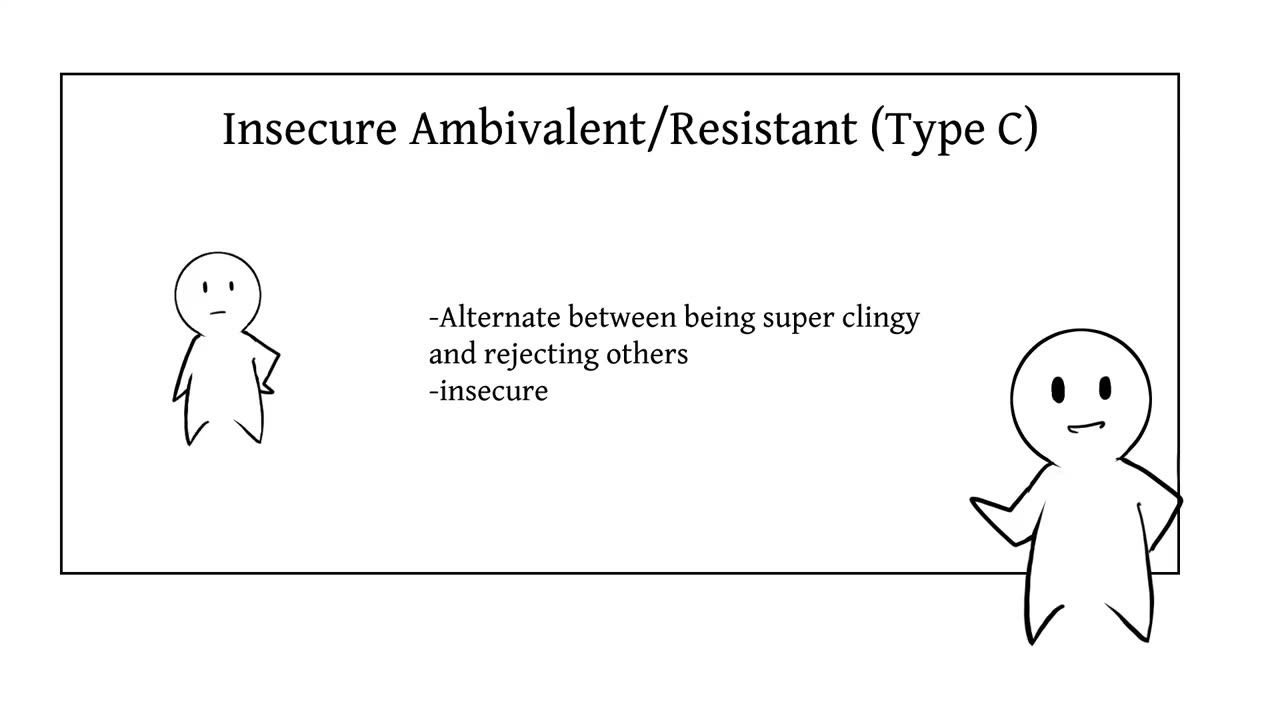Premium Only Content

How Your Childhood Affects Your Life
In the previous video, we briefly discussed attachment styles and how each type responds to parenting, relationships, friendships, and outlook on life. In this video, Psych2Go aims to explore each of the four attachment styles: Secure (type B), Avoidant Insecure (type A), Ambivalent/Resistant Insecure (Type C), and Disorganized. And how each type functions at work or school, relationships, and crises.
Hope it is useful. Thank You
Credit
Screenwriter: Amy
Script Editor: Kelly Soong
VOICE OVER: Amanda Silvera
Animation creator: Gabriella
YouTube Manager: Cindy Cheong
Reference:
Levy, K.N., Ellison, W.D., Scott, L.N., & Bernecker, S.L. (2011). Attachment style. Journal of clinical psychology, 67(2), 193-203.
Solomon, J., & George, C. (Eds.). (2011). Disorganized attachment and parenting. Guilford Press.
Feeney, J. A., & Noller, P. (1990). Attachment style as a predictor of adult romantic relationships. Journal of Personality and Social Psychology, 58(2), 281.
Bartholomew, K., Henderson, A., & Dutton, D. (2012). Insecure attachments and violent intimate relationships. In Adult attachment and couples psychotherapy (pp. 67-85). Routledge.
Davila, J., Burge, D., & Hammen, C. (1997). Why do attachment styles change? Journal of personality and social psychology, 73(4), 826.
Vicedo, Marga (14 February 2017). "Putting attachments in their place: Disciplinary and cultural contexts". European Journal of Developmental Psychology.14(6): 684–699. doi:1080/17405629.2017.1289838.
Mikulincer, M. (1995). Attachment styles and mental representations of the self. Journal of Personality and Social Psychology, 69(6), 1203.
-
 LIVE
LIVE
Lofi Girl
2 years agolofi hip hop radio 📚 - beats to relax/study to
5,499 watching -
 12:05
12:05
Vania Fernandes
4 days agoMy empty Dubai apartment tour
71.2K21 -
 46:03
46:03
SouthernbelleReacts
3 days ago $6.44 earnedShutter Island Reaction | I Did NOT See That Ending Coming! | SouthernBelle Reacts
19.6K2 -
 6:39
6:39
nospeedlimitgermany
1 day ago $2.61 earnedBMW M3 E46 | 343 PS | Top Speed Drive German Autobahn No Speed Limit POV
13.4K7 -
 11:41
11:41
Sideserf Cake Studio
21 hours ago $3.12 earnedI Made A Disco Ball Cake!
27.8K6 -
 4:58:51
4:58:51
Steven Crowder
15 hours agoLIVE: No Kings Day - Following The Money w/ Guest: Data Republican | Louder with Crowder
810K435 -
 1:11:45
1:11:45
Man in America
14 hours ago🚨 America Descends Into CHAOS—Are You Prepared?
82.2K62 -
 2:23:54
2:23:54
Badlands Media
1 day agoDevolution Power Hour Ep. 363: Lawfare, Psyops, and the Great Narrative Reversal
98.1K25 -
 2:32:48
2:32:48
Tundra Tactical
8 hours ago $10.21 earnedSilencers, Senators, and Survival: Roasting Lies and a Security Breakdown of The MN Shooting
65.2K7 -
 10:45:48
10:45:48
Spartan
12 hours agoPro Halo Player | !politics Halo Infinite Ranked Arena into SWTOR and/or Gears Beta
67.5K3